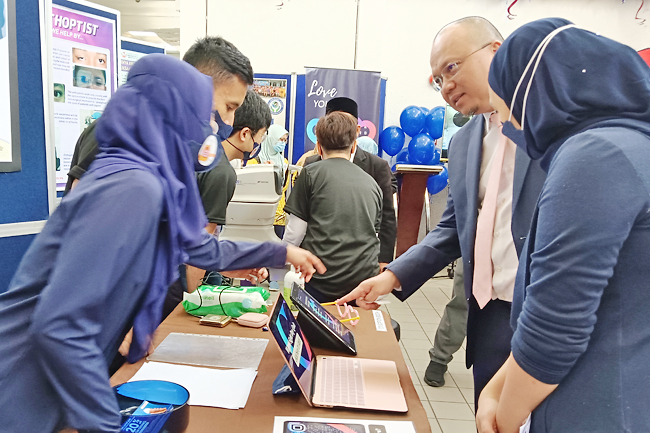Lyna Mohamad
Latest statistics in 2020 from the International Agency for the Prevention of Blindness (IAPB) recorded about 23,000 people living with sight problems in the sultanate and, of this number, more than 800 of them are classified as blind.
Minister of Health Dato Seri Setia Dr Haji Mohd Isham bin Haji Jaafar underscored this in his speech at the World Sight Day 2022 celebration yesterday.
“It is therefore vital for Brunei Darussalam to take a ‘whole-of-nation’ approach to the issue of vision and ensure eye health is included in the relevant development plan and policy,” he said.
The minister also shared that vision is an important contributor to the 2030 Sustainable Development Agenda.
He added that the World Health Organization’s World Report on Vision and United Nations’ (UN) Resolution on Vision have stated that eye health is critical to achieving the sustainable development goals (SDGs) of UN SDGs.

“Therefore, eye health is a major global health problem that needs to be given due attention. However, it is often overlooked in the list of public health priorities,” said the minister.
Annually, World Sight Day is celebrated globally to spread and share awareness about the importance of eye healthcare and this year’s theme, ‘Love Your Eyes’ is a continuation of the IAPB’s campaign in 2021.
In conjunction with this year’s World Sight Day, the Ministry of Health (MoH) also announced that the ministry has participated in the 12th Asia-Pacific Eye Care Week organised by the Asia-Pacific Academy of Ophthalmology with two topics related to eye healthcare highlighted this year, namely ‘Eye Cancer in Children’ and ‘Imaging the Eye’.
Meanwhile, the minister shared the main causes of vision problems in the country: cataracts, refractive error and diabetic retinopathy. In the last 12 months, these three treatable conditions alone have accounted for 35 per cent of causes of vision impairment in all hospital and clinic attendances here.
Diabetic retinopathy is a complication that usually lingers in diabetic patients.
The condition affects approximately one-third of people with diabetes, where early detection and treatment are necessary to prevent permanent vision loss.
At this point, said the minister, it is estimated that 20 per cent of the population (approximately 50,000) suffer from diabetes where one in five diabetics are affected by diabetic retinopathy, thus an effective diabetic retinopathy screening programme among people with diabetes is very important in preventing complications as well as permanent vision loss.
However, the coverage rate of the diabetic retinopathy screening programme in the country is only at 56 per cent with one of the causes being the absence of patients for the screening test, added the minister.
The use of artificial intelligence (AI) software in ophthalmology in the last decade has shown a development that is particularly related to the examination of diabetic retinopathy screening tests.
In addition, the study also showed an encouraging development and has high potential in the use of AI for other treatable eye problems, such as glaucoma and macular degeneration.
For the past two years, the MoH and the Department of Ophthalmology have been exploring and researching the system’s potential clinical deep-learning AI system.
A recent clinical study concluded that the use of AI software shows an encouraging development in the early detection of referable diabetic retinopathy among the patient population the country.
Additionally, the use of AI systems will also help shorten the examinations time from 60 minutes to mere five minutes as patients are no longer required to use pharmacological agents to dilate the eyes.
Rebuilding and improving the existing diabetic retinopathy screening programme is both in line with the strategic goals in the prevention and control of non-communicable diseases and also in using digital health as a norm, in line with Brunei Vision 2035.







